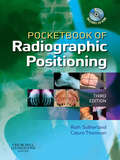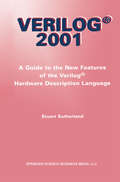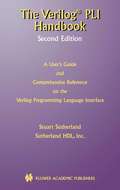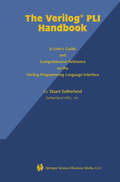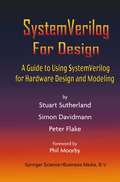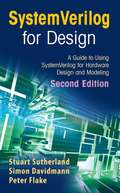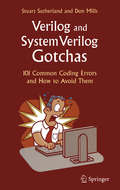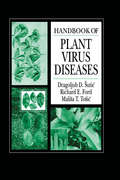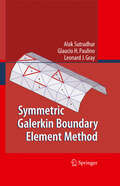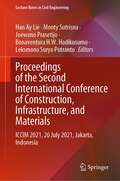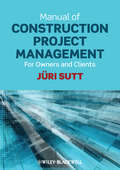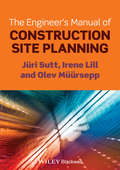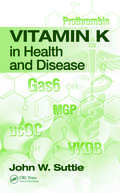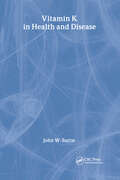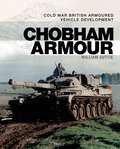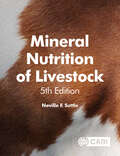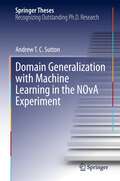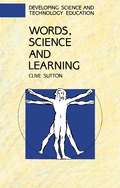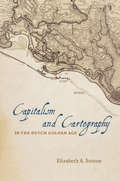- Table View
- List View
Pocketbook of Radiographic Positioning E-Book
by Ruth Sutherland Calum ThomsonThis title is directed primarily towards health care professionals outside of the United States. It is a practical guide to the wide variety of radiographic projections that are commonly encountered in a clinical environment. It provides clear and concise advice on how to approach radiographic positioning and technique, both efficiently and effectively. Particular emphasis is placed on the importance of achieving the best possible image with the minimum exposure. The routine examinations are dealt with by region in a systematic way and have the same easy-to-use format throughout. For each projection, there is a patient position photograph and an accompanying radiograph to ensure that the required result of the examination has been achieved.• Inclusion of CD expands contents of book and aids learning.• Size and layout assist easy reference• Gives simple hints to aid positioning and highlights errors to be avoided, both in the examination and radiological assessmentsThe CDrom expands contents of book in three areas: technique, radiological assessment and pathology. Additional illustrations are included and leader lines and legends added to enlarged versions of existing images to help readers assess radiographs.Text updated and bibliography expanded.
Verilog — 2001: A Guide to the New Features of the Verilog® Hardware Description Language (The Springer International Series in Engineering and Computer Science #652)
by Stuart Sutherlandby Phil Moorby The Verilog Hardware Description Language has had an amazing impact on the mod em electronics industry, considering that the essential composition of the language was developed in a surprisingly short period of time, early in 1984. Since its introduc tion, Verilog has changed very little. Over time, users have requested many improve ments to meet new methodology needs. But, it is a complex and time consuming process to add features to a language without ambiguity, and maintaining consistency. A group of Verilog enthusiasts, the IEEE 1364 Verilog committee, have broken the Verilog feature doldrums. These individuals should be applauded. They invested the time and energy, often their personal time, to understand and resolve an extensive wish-list of language enhancements. They took on the task of choosing a feature set that would stand up to the scrutiny of the standardization process. I would like to per sonally thank this group. They have shown that it is possible to evolve Verilog, rather than having to completely start over with some revolutionary new language. The Verilog 1364-2001 standard provides many of the advanced building blocks that users have requested. The enhancements include key components for verification, abstract design, and other new methodology capabilities. As designers tackle advanced issues such as automated verification, system partitioning, etc., the Verilog standard will rise to meet the continuing challenge of electronics design.
The Verilog PLI Handbook: A User’s Guide and Comprehensive Reference on the Verilog Programming Language Interface (The Springer International Series in Engineering and Computer Science #666)
by Stuart Sutherlandby Maq Mannan President and CEO, DSM Technologies Chairman of the IEEE 1364 Verilog Standards Group Past Chairman of Open Verilog International One of the major strengths of the Verilog language is the Programming Language Interface (PLI), which allows users and Verilog application developers to infinitely extend the capabilities of the Verilog language and the Verilog simulator. In fact, the overwhelming success of the Verilog language can be partly attributed to the exi- ence of its PLI. Using the PLI, add-on products, such as graphical waveform displays or pre and post simulation analysis tools, can be easily developed. These products can then be used with any Verilog simulator that supports the Verilog PLI. This ability to create thi- party add-on products for Verilog simulators has created new markets and provided the Verilog user base with multiple sources of software tools. Hardware design engineers can, and should, use the Verilog PLI to customize their Verilog simulation environment. A Company that designs graphics chips, for ex- ple, may wish to see the simulation results of a new design in some custom graphical display. The Verilog PLI makes it possible, and even trivial, to integrate custom so- ware, such as a graphical display program, into a Verilog simulator. The simulation results can then dynamically be displayed in the custom format during simulation. And, if the company uses Verilog simulators from multiple simulator vendors, this integrated graphical display will work with all the simulators.
The Verilog PLI Handbook: A User’s Guide and Comprehensive Reference on the Verilog Programming Language Interface
by Stuart SutherlandThe Verilog Programming Language Interface, commonly called the Verilog PU, is one of the more powerful features of Verilog. The PU provides a means for both hardware designers and software engineers to interface their own programs to commercial Verilog simulators. Through this interface, a Verilog simulator can be customized to perform virtually any engineering task desired. Just a few of the common uses of the PU include interfacing Veri log simulations to C language models, adding custom graphical tools to a simulator, reading and writing proprietary file formats from within a simulation, performing test coverage analysis during simulation, and so forth. The applications possible with the Verilog PLI are endless. Intended audience: this book is written for digital design engineers with a background in the Verilog Hardware Description Language and a fundamental knowledge of the C programming language. It is expected that the reader: Has a basic knowledge of hardware engineering, specifically digital design of ASIC and FPGA technologies.Is familiar with the Verilog Hardware Description Language (HDL), and can write models of hardware circuits in Verilog, can write simulation test fixtures in Verilog, and can run at least one Verilog logic simulator.Knows basic C-language programming, including the use of functions, pointers, structures and file I/O. Explanations of the concepts and terminology of digital
SystemVerilog For Design: A Guide to Using SystemVerilog for Hardware Design and Modeling
by Stuart Sutherland Simon Davidmann Peter FlakeSystemVerilog for Design Second Edition: A Guide to Using SystemVerilog for Hardware Design and Modeling
by Stuart Sutherland Simon Davidmann Peter FlakeIn its updated second edition, this book has been extensively revised on a chapter by chapter basis. The book accurately reflects the syntax and semantic changes to the SystemVerilog language standard, making it an essential reference for systems professionals who need the latest version information. In addition, the second edition features a new chapter explaining the SystemVerilog "packages", a new appendix that summarizes the synthesis guidelines presented throughout the book, and all of the code examples have been updated to the final syntax and rerun using the latest version of the Synopsys, Mentor, and Cadance tools.
Verilog and SystemVerilog Gotchas: 101 Common Coding Errors and How to Avoid Them
by Stuart Sutherland Don MillsThis book will help engineers write better Verilog/SystemVerilog design and verification code as well as deliver digital designs to market more quickly. It shows over 100 common coding mistakes that can be made with the Verilog and SystemVerilog languages. Each example explains in detail the symptoms of the error, the languages rules that cover the error, and the correct coding style to avoid the error. The book helps digital design and verification engineers to recognize, and avoid, these common coding mistakes. Many of these errors are very subtle, and can potentially cost hours or days of lost engineering time trying to find and debug them.
Handbook of Plant Virus Diseases
by Dragoljub D. Sutic Richard E. Ford Malisa T. TosicHandbook of Plant Virus Diseases presents basic information about viral-caused and viral-like diseases in many cultivated crops. The editors, internationally known plant pathologists, provide authoritative descriptive symptomatic signatures of virus diseases, to aid in the diagnosis and possible control of viruses. This handbook organizes cultivate
Symmetric Galerkin Boundary Element Method
by Alok Sutradhar Glaucio Paulino Leonard J. GraySymmetric Galerkin Boundary Element Method presents an introduction as well as recent developments of this accurate, powerful, and versatile method. The formulation possesses the attractive feature of producing a symmetric coefficient matrix. In addition, the Galerkin approximation allows standard continuous elements to be used for evaluation of hypersingular integrals. FEATURES• Written in a form suitable for a graduate level textbook as well as a self-learning tutorial in the field.• Covers applications in two-dimensional and three-dimensional problems of potential theory and elasticity. Additional basic topics involve axisymmetry, multi-zone and interface formulations. More advanced topics include fluid flow (wave breaking over a sloping beach), non-homogeneous media, functionally graded materials (FGMs), anisotropic elasticity, error estimation, adaptivity, and fracture mechanics. • Presents integral equations as a basis for the formulation of general symmetric Galerkin boundary element methods and their corresponding numerical implementation. • Designed to convey effective unified procedures for the treatment of singular and hypersingular integrals that naturally arise in the method. Symbolic codes using Maple® for singular-type integrations are provided and discussed in detail.• The user-friendly adaptive computer code BEAN (Boundary Element ANalysis), fully written in Matlab®, is available as a companion to the text. The complete source code, including the graphical user-interface (GUI), can be downloaded from the web site http://www.ghpaulino.com/SGBEM_book. The source code can be used as the basis for building new applications, and should also function as an effective teaching tool. To facilitate the use of BEAN, a video tutorial and a library of practical examples are provided.
Proceedings of the Second International Conference of Construction, Infrastructure, and Materials: ICCIM 2021, 26 July 2021, Jakarta, Indonesia (Lecture Notes in Civil Engineering #216)
by Monty Sutrisna Han Ay Lie Joewono Prasetijo Bonaventura H.W. Hadikusumo Leksmono Suryo PutrantoThis book comprises selected proceedings of the 2nd International Conference of Construction, Infrastructure, and Materials (ICCIM 2021) focusing on topics such as structural engineering, construction materials, geotechnical engineering, transportation system and engineering, construction management, water resources engineering, and infrastructure development. Its content will be useful to researchers, educators, practitioners, and policymakers alike.
Manual of Construction Project Management: For Owners and Clients
by Jüri SuttThis construction client's manual is written in the form of a list of activities. It supports owners in the role of client by helping them make choices during the project development process. This increases control over cost, quality and duration at each stage. Activities within each main stage of the project development (preparation stage; procurement; design; preparation for construction; construction itself; handover; implementation) are divided into phases, each requiring separate decision-making. The phase begins with a list of direct previous decisions and continues with a list of executors, the goal of the present phase and a list of activities to be performed. And each phase ends with a list of expected results and a list of activities that these results release for action in the next phase. The sequence of these seven stages can be altered to help building owners manage risk by choosing and combining the timing of these stages. The tasks involved in project preparation, described in the first chapter are for example, often left by the owner for the designers to solve - or sometimes even the contractors. The decisions relating to the choice of procurement schemes, described in the second chapter, can be made either at the preparation stage of project development, as part of the prioritisation of aims, or at the time of choosing the designer, or at the stage of choosing construction contractors. Manual of Construction Project Management – for owners & clients is for prospective owners who either operate as clients themselves, or who use the services of professional construction management companies. The aim is to help both owners and their construction partners understand what to expect from each other. The manual describes activities at the level of detail required to choose the management task or method to make the decision. It is not bound to regulations of any specific country and a detailed glossary makes it an indispensable worldwide reference.
Manual of Construction Project Management: For Owners and Clients
by Jüri SuttThis construction client's manual is written in the form of a list of activities. It supports owners in the role of client by helping them make choices during the project development process. This increases control over cost, quality and duration at each stage. Activities within each main stage of the project development (preparation stage; procurement; design; preparation for construction; construction itself; handover; implementation) are divided into phases, each requiring separate decision-making. The phase begins with a list of direct previous decisions and continues with a list of executors, the goal of the present phase and a list of activities to be performed. And each phase ends with a list of expected results and a list of activities that these results release for action in the next phase. The sequence of these seven stages can be altered to help building owners manage risk by choosing and combining the timing of these stages. The tasks involved in project preparation, described in the first chapter are for example, often left by the owner for the designers to solve - or sometimes even the contractors. The decisions relating to the choice of procurement schemes, described in the second chapter, can be made either at the preparation stage of project development, as part of the prioritisation of aims, or at the time of choosing the designer, or at the stage of choosing construction contractors. Manual of Construction Project Management – for owners & clients is for prospective owners who either operate as clients themselves, or who use the services of professional construction management companies. The aim is to help both owners and their construction partners understand what to expect from each other. The manual describes activities at the level of detail required to choose the management task or method to make the decision. It is not bound to regulations of any specific country and a detailed glossary makes it an indispensable worldwide reference.
The Engineer's Manual of Construction Site Planning
by Jüri Sutt Irene Lill Olev MüürseppThis handbook addresses problems facing the engineer when preparing to build, both during the contract bidding phase and after a contract has been concluded. It offers clear guidelines for planning the resources and machinery on site, as well as the safe positioning of roads, cranes, storage and temporary buildings. Site planning activities are presented here in logical sequence, offering an efficient and safe design of the construction site and of the temporary works. The book describes the process of engineering preparation of on-site construction works in all phases of the construction life-cycle, from the design phase - preparing the financial plan and procurement scheme for the owner before tendering the contract; the tendering phase; and after bid completion. A list of procedures is presented for planning the construction site in order to simplify the engineer’s work of site and temporary works planning. The Engineer’s Manual of Construction Site Planning is for all those involved in the planning of construction sites, construction managers, construction engineers and quantity surveyors, as well as for students in civil engineering and construction.
The Engineer's Manual of Construction Site Planning
by Jüri Sutt Irene Lill Olev MüürseppThis handbook addresses problems facing the engineer when preparing to build, both during the contract bidding phase and after a contract has been concluded. It offers clear guidelines for planning the resources and machinery on site, as well as the safe positioning of roads, cranes, storage and temporary buildings. Site planning activities are presented here in logical sequence, offering an efficient and safe design of the construction site and of the temporary works. The book describes the process of engineering preparation of on-site construction works in all phases of the construction life-cycle, from the design phase - preparing the financial plan and procurement scheme for the owner before tendering the contract; the tendering phase; and after bid completion. A list of procedures is presented for planning the construction site in order to simplify the engineer’s work of site and temporary works planning. The Engineer’s Manual of Construction Site Planning is for all those involved in the planning of construction sites, construction managers, construction engineers and quantity surveyors, as well as for students in civil engineering and construction.
Chinese Foreign Policy/h
by Robert G. SutterChinese foreign policy has changed radically since the Cultural Revolution of 1966-1969. This book focuses on turning points in China's policy and looks at the influence of foreign pressures on China. It assesses the impact of internal political struggles on the conduct of Chinese foreign affairs.
Chinese Foreign Policy/h
by Robert G. SutterChinese foreign policy has changed radically since the Cultural Revolution of 1966-1969. This book focuses on turning points in China's policy and looks at the influence of foreign pressures on China. It assesses the impact of internal political struggles on the conduct of Chinese foreign affairs.
Vitamin K in Health and Disease
by John W. SuttieVitamin K: Past, Present, Future Essential for normal blood coagulation, possible roles in bone, vascular, and tumor metabolism, and a nutrient critical to the health of the newborn infant -- these are just some of the many health-promoting aspects of Vitamin K. Vitamin K in Health and Disease navigates the exciting research venues that have opened
Vitamin K in Health and Disease
by John W. SuttieVitamin K: Past, Present, Future Essential for normal blood coagulation, possible roles in bone, vascular, and tumor metabolism, and a nutrient critical to the health of the newborn infant -- these are just some of the many health-promoting aspects of Vitamin K. Vitamin K in Health and Disease navigates the exciting research venues that have opened
Chobham Armour: Cold War British Armoured Vehicle Development
by William SuttieA comprehensive overview of the work of the Military Vehicles Research and Development Establishment on Chobham Common, which provided armoured vehicles for the British Army from 1945 to its close in 2004.Through much of World War II British tanks and armoured vehicles were outmatched by the German tanks they encountered and this led to the British Army placing much emphasis on ensuring that the same situation would not arise again if the Cold War turned hot. The task of developing the Main Battle Tanks and supporting armoured vehicles to out-range and quickly destroy the Soviet threat fell to the scientists and engineers at the Fighting Vehicle Research and Development Establishment on Chobham Common near to Chertsey. It was the design authority for all British Military vehicles for most of the period.Military vehicle and equipment expert William Suttie draws extensively on official MOD reports to tell the story of the development of the British Cold War armour, such as the Centurion, Chieftain, Challenger, and many other wheeled and tracked armour vehicles that served the British Army of The Rhine. The vehicles developed at the Chertsey site were never used for their intended purpose on the plains of North-west Germany, but have proved their worth in British operations in places like Korea, Bosnia, Kuwait, Iraq and Afghanistan, as well as in the hands of other users around the world.Fully illustrated with photographs, schemes and drawings, including some that have never been published before, this is a unique detailed overview of the development of all post-war British armoured vehicles.
Chobham Armour: Cold War British Armoured Vehicle Development
by William SuttieA comprehensive overview of the work of the Military Vehicles Research and Development Establishment on Chobham Common, which provided armoured vehicles for the British Army from 1945 to its close in 2004.Through much of World War II British tanks and armoured vehicles were outmatched by the German tanks they encountered and this led to the British Army placing much emphasis on ensuring that the same situation would not arise again if the Cold War turned hot. The task of developing the Main Battle Tanks and supporting armoured vehicles to out-range and quickly destroy the Soviet threat fell to the scientists and engineers at the Fighting Vehicle Research and Development Establishment on Chobham Common near to Chertsey. It was the design authority for all British Military vehicles for most of the period.Military vehicle and equipment expert William Suttie draws extensively on official MOD reports to tell the story of the development of the British Cold War armour, such as the Centurion, Chieftain, Challenger, and many other wheeled and tracked armour vehicles that served the British Army of The Rhine. The vehicles developed at the Chertsey site were never used for their intended purpose on the plains of North-west Germany, but have proved their worth in British operations in places like Korea, Bosnia, Kuwait, Iraq and Afghanistan, as well as in the hands of other users around the world.Fully illustrated with photographs, schemes and drawings, including some that have never been published before, this is a unique detailed overview of the development of all post-war British armoured vehicles.
Mineral Nutrition of Livestock
by Neville SuttleThe fifth edition of this important book reviews recent advances in livestock mineral nutrition, updated throughout with new references that reflect the growing complexity of mineral metabolism. Major related themes covered include the assessment of the 'mineral value' of feeds, the false hopes placed on organic mineral supplements and limiting the 'mineral footprint' of livestock production to lower environmental pollution. Also discussed are new developments and concepts including: Salt tolerance and optimizing production in salt-rich environments. Use of phytase rather than phosphate supplements in pig and poultry rations. Demineralization of the skeleton during confinement. Recognition of sub-acute, clinical hypocalcaemia as a disorder in dairy cows. The assay of 'free' plasma B12 to assess cobalt status of cattle. Limitations of cell culture and ligated loop techniques for assessing bioavailability. Following a clear and easy to reference structure, the book also considers potential pitfalls, such as misleading estimates of mineral requirements for growth, and misinterpretation of genomic markers for mineral requirements and bioavailability of supplements. An essential resource for researchers and students in animal nutrition, agriculture and veterinary medicine, this book also forms a useful reference for veterinary practitioners and those concerned with human nutrition and environmental protection.
Domain Generalization with Machine Learning in the NOvA Experiment (Springer Theses)
by Andrew T.C. SuttonThis thesis presents significant advances in the use of neural networks to study the properties of neutrinos. Machine learning tools like neural networks (NN) can be used to identify the particle types or determine their energies in detectors such as those used in the NOvA neutrino experiment, which studies changes in a beam of neutrinos as it propagates approximately 800 km through the earth. NOvA relies heavily on simulations of the physics processes and the detector response; these simulations work well, but do not match the real experiment perfectly. Thus, neural networks trained on simulated datasets must include systematic uncertainties that account for possible imperfections in the simulation. This thesis presents the first application in HEP of adversarial domain generalization to a regression neural network. Applying domain generalization to problems with large systematic variations will reduce the impact of uncertainties while avoiding the risk of falsely constraining the phase space. Reducing the impact of systematic uncertainties makes NOvA analysis more robust, and improves the significance of experimental results.
Words, Science and Learning (UK Higher Education OUP Humanities & Social Sciences Education OUP)
by Clive SuttonDespite the power of words to move minds, appreciating the written or spoken word is rarely thought to be the essence of teaching and learning science and much more effort goes into organizing practical work. There is an exaggerated confidence in the value of the direct experience of things as opposed to "mere words", and a corresponding neglect of how words are actually involved in developing anyone's scientific understanding. Clive Sutton does not wish to deny the value of first hand scientific understanding, and shows that they cannot just be taken for granted while we busy ourselves in the organization of practical work. He explores the role of language in the growth of science itself, in the growth of learners' ideas, and in classroom practice; and how these relate, for instance, to some pupils' alienation from science and the isolation of science in the curriculum.
Capitalism and Cartography in the Dutch Golden Age
by Elizabeth A. SuttonIn Capitalism and Cartography in the Dutch Golden Age, Elizabeth A. Sutton explores the fascinating but previously neglected history of corporate cartography during the Dutch Golden Age, from ca. 1600 to 1650. She examines how maps were used as propaganda tools for the Dutch West India Company in order to encourage the commodification of land and an overall capitalist agenda. Building her exploration around the central figure of Claes Jansz Vischer, an Amsterdam-based publisher closely tied to the Dutch West India Company, Sutton shows how printed maps of Dutch Atlantic territories helped rationalize the Dutch Republic’s global expansion. Maps of land reclamation projects in the Netherlands, as well as the Dutch territories of New Netherland (now New York) and New Holland (Dutch Brazil), reveal how print media were used both to increase investment and to project a common narrative of national unity. Maps of this era showed those boundaries, commodities, and topographical details that publishers and the Dutch West India Company merchants and governing Dutch elite deemed significant to their agenda. In the process, Sutton argues, they perpetuated and promoted modern state capitalism.
Capitalism and Cartography in the Dutch Golden Age
by Elizabeth A. SuttonIn Capitalism and Cartography in the Dutch Golden Age, Elizabeth A. Sutton explores the fascinating but previously neglected history of corporate cartography during the Dutch Golden Age, from ca. 1600 to 1650. She examines how maps were used as propaganda tools for the Dutch West India Company in order to encourage the commodification of land and an overall capitalist agenda. Building her exploration around the central figure of Claes Jansz Vischer, an Amsterdam-based publisher closely tied to the Dutch West India Company, Sutton shows how printed maps of Dutch Atlantic territories helped rationalize the Dutch Republic’s global expansion. Maps of land reclamation projects in the Netherlands, as well as the Dutch territories of New Netherland (now New York) and New Holland (Dutch Brazil), reveal how print media were used both to increase investment and to project a common narrative of national unity. Maps of this era showed those boundaries, commodities, and topographical details that publishers and the Dutch West India Company merchants and governing Dutch elite deemed significant to their agenda. In the process, Sutton argues, they perpetuated and promoted modern state capitalism.
